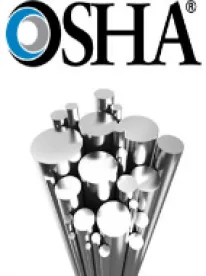Companies providing consumer finance products or services should review policies and training materials to ensure compliance.
On April 3, the Occupational Safety and Health Administration (OSHA) published an interim final rule, effective that day, that contains important guidance regarding several aspects of the whistleblower provision of the Consumer Financial Protection Act of 2010 (CFPA), section 1057 of the Dodd-Frank Wall Street Reform and Consumer Protection Act of 2010.[1]
The CFPA provides that “[n]o covered person or service provider shall terminate or in any other way discriminate against . . . any covered employee” because the covered employee has, among other things, provided “information to the employer, the Bureau, or [government] agency relating to any violation of, or any act or omission that the employee reasonably believes to be a violation of, any provision of [the CFPA] or any other provision of law that is subject to the jurisdiction of the Bureau” or rule prescribed by the Bureau. The interim final rule provides clarification and guidance regarding several key aspects of this provision, including establishing procedures for handling whistleblower complaints.
Interested persons have until June 2, 2014 to submit comments on the proposed interim rule.[2]
CFPA Coverage
The interim final rule mirrors the definitions in the CFPA for covered entities (e.g., covered person or service provider) and covered employees. The definition of “covered employee” does not, by its terms, include all employees of a covered person or service provider, but rather it is limited to those individuals who are “performing tasks related to the offering or provision of a consumer finance product or service,” consistent with the statutory definition. The interim final rule elaborates that the CFPA covers a wide range of entities and institutions, including banks and other providers of consumer financial products and services such as, residential mortgage loan origination, brokerage, and servicing; mortgage modification and foreclosure relief services; private education loans; consumer lending; prepaid card services; and debt relief and collection.3
The Reasonable Belief Standard
The commentary to the interim final rule indicates that OSHA will interpret the “reasonable belief” standard consistent with its interpretation of “reasonable belief” under section 806 of the Sarbanes-Oxley Act of 2002; namely, under the standard enunciated by the Administrative Review Board (ARB) in In re Sylvester v. Parexel International LLC.[4] Under this standard, the complainant must hold (1) a subjective, good-faith belief that the conduct complained of violated any provision of the CFPA or any other provision of law under the Consumer Financial Protection Bureau’s (CFPB’s) jurisdiction or any rule, order, standard, or prohibition prescribed by the CFBP and (2) an objectively reasonable belief that the conduct violates one of the listed categories of law. Objective reasonableness is determined “based on the knowledge available to a reasonable person in the same factual circumstances with the same training and experience as the aggrieved employee.” The complainant need not show an actual violation of the law.
The Prima Facie Showing
Complaints are first adjudicated by the Assistant Secretary of Labor for Occupational Safety and Health (the Assistant Secretary). The Assistant Secretary must provide to the respondent (e.g., the employer) written notice of the filing of the complaint, the allegations contained in the complaint, the substance of the evidence supporting the complaint, and the rights afforded the respondent throughout the investigation. Within 20 days after receiving the complaint, the Assistant Secretary must afford both the complainant and respondent an opportunity to submit a written statement of their respective positions.5 OSHA will provide the complainant (or legal counsel) with a redacted copy of all of the respondent’s submissions to OSHA that are responsive to the complainant’s whistleblower complaint and will allow the complainant a sufficient amount of time to respond.
OSHA must dismiss a CFPA complaint and not investigate further if (1) the complainant fails to meet the prima facie showing that protected activity was a contributing factor in the adverse action or (2) the employer rebuts that showing by clear and convincing evidence that it would have taken the same adverse action absent the protected activity. In conducting this initial “gatekeeping” phase, OSHA will review the complaint and information gleaned from supplemental interviews with the complainant to determine whether the facts, either directly or circumstantially, give rise to an inference that the respondent knew or suspected that the covered employee engaged in protected activity and that the protected activity was a contributing factor in the adverse action.
The Assistant Secretary’s Findings and Preliminary Order
If the case proceeds beyond the prima facie phase, the Assistant Secretary must issue, within 60 days of the filed complaint, written findings that specify whether there is reasonable cause to believe that protected activity was a contributing factor in the alleged adverse action.
The interim final rule provides that the Assistant Secretary will issue written findings and a preliminary order based on the complaint, the respondent’s response, and the Assistant Secretary’s investigation. Prior to issuing findings and a preliminary order in favor of a complainant, the Assistant Secretary must contact the respondent to give notice of the substance of the relevant evidence that supports the complainant’s allegations as developed during the course of the investigation. This evidence includes any witness statements, which may be redacted in appropriate circumstances. The respondent must then be given the opportunity to submit a written response, to meet with the investigators, to present statements from witnesses in support of his or her position, and to present legal and factual arguments.
If the Assistant Secretary concludes that there is reasonable cause to believe that the complaint has merit, he or she will order appropriate relief, including preliminary reinstatement, affirmative action to abate the violation, back pay with interest, and compensatory damages. The Assistant Secretary also may award the complainant all costs and expenses, including attorney fees and expert witness fees.
Significantly, OSHA’s discussion of the interim final rule provides that, in lieu of preliminary reinstatement, the Assistant Secretary may, in appropriate circumstances, order “economic reinstatement,” which reinstates the complainant’s pay and benefits without returning the complainant to work (like an award of front pay). OSHA explains that actual reinstatement is preferred unless the evidence establishes that it is inadvisable for some reason, in which case, economic reinstatement may be used to compensate the employee while adjudication is completed before the Administrative Law Judge (ALJ). Significantly, neither the employee nor the employer has the statutory right to request economic reinstatement, and OSHA has discretion whether to award it. Moreover, the interim final rule states that “[t]here is no statutory basis for allowing the employer to recover the costs of economically reinstating an employee should the employer ultimately prevail in the whistleblower adjudication.” Thus, an employer may not be able to recoup any monies paid pursuant to an economic reinstatement order by an ALJ, even if the employer succeeds on appeal before the ALJ or the ARB.
ALJ Proceedings
Both parties have 30 days after the date they receive the Assistant Secretary’s findings to file objections and request an ALJ hearing. If a party timely files objections, all provisions of the preliminary order are stayed, except for any portion related to preliminary reinstatement. The respondent may move to stay the preliminary order of reinstatement, but the ALJ may grant that motion only in exceptional circumstances. In the ALJ proceedings, the Assistant Secretary may choose to prosecute the case or to otherwise participate in the proceedings. The CFPB also has the right to participate as an amicus curiae.
Before the ALJ, the complainant must demonstrate, by a preponderance of the evidence, that the protected activity was a “contributing factor” in the adverse action. If the employee meets this burden, then the employer must demonstrate, by “clear and convincing evidence,” that it would have taken the same action in the absence of the protected activity to escape liability. The ALJ has the authority to order the same remedies as the Assistant Secretary.
If the ALJ determines that the respondent has not violated the law, it will issue an order denying the complaint. Further, if, on the the respondent’s request, the ALJ finds that the complaint was frivolous or was brought in bad faith, it may award to the respondent reasonable attorney fees, not exceeding $1,000. The interim final rule provides that the Secretary must issue a final order within 120 days after the hearing’s conclusion.
Appeal to the ARB
Under the interim final rule, both parties have 14 days from the date of the ALJ’s decision to petition the ARB to review the decision. Parties do not have a right to an ARB appeal, and the ARB has discretion to choose the cases it will hear and must decide whether to hear the case within 30 days. If the ARB chooses not to accept the case for review, the ALJ’s decision will become the final order of the Secretary. If, however, the ARB chooses to hear an appeal, the ALJ’s decision is inoperative unless and until the ARB issues an order adopting the decision, except that orders of reinstatement are effective while ARB review is pending. The respondent may move for an order staying the ALJ’s order of reinstatement pending ARB review, and the ARB may grant such a motion in exceptional circumstances.
Judicial Review
Within 60 days after the ALJ or the ARB issues a final order, a party may file a petition for review of the order in the U.S. Court of Appeals for the circuit in which the violation allegedly occurred or in the circuit in which the complainant resided on the date of the alleged violation.
Judicial Enforcement
If a respondent fails to comply with an order of the Assistant Secretary, ALJ, or ARB, the Secretary of Labor or the complainant may file a civil action in district court seeking enforcement of the order.
District Court Jurisdiction
The interim final rule states that a complainant may seek de novo review in a federal district court (1) within 90 days after receiving a written determination from the Assistant Secretary, provided that there has been no final decision, or (2) if there has been no final decision and more than 210 days have passed since the filing of the complaint. OSHA’s commentary clarifies that no judicial action may be filed after a complainant has received a final decision, even if the final decision was not issued within the CFPA’s prescribed time limits.
Implications
Companies that offer or provide consumer finance products or services should review their whistleblower policies, procedures, and training to ensure that they cover conduct protected under the CFPA. In addition, companies should ensure that they have implemented a process for reporting any concerns or complaints about consumer finance products or services and that any such reports are documented and investigated properly.
[1]. Procedures for Handling Retaliation Complaints Under the Employee Protection Provision of the Consumer Financial Protection Act of 2010, 79 Fed. Reg. 18,630 (Apr. 3, 2014) (to be codified at 29 C.F.R. pt. 1985),available here. OSHA has found good cause to provide an immediate effective date for this interim final rule. Thus, it is effective April 3, 2014.
[2]. OSHA has taken the position that the rule is procedural and interpretive, rather than substantive, and therefore the notice and comment rulemaking procedures do not apply. Nevertheless, OSHA is providing interested persons 60 days (until June 2, 2014) to submit comments on the interim final rule, after which it will publish a final rule.
[3]. OSHA further explains that that the CFPA covers the Consumer Leasing Act of 1976 (15 U.S.C. § 1667 et. seq.), the Fair Debt Collection Practices Act (15 U.S.C. § 1692 et seq.), and the Home Mortgage Disclosure Act of 1975 (12 U.S.C. § 2801), among others.
[4]. ARB No. 07-123, 2011 WL 2165854, at *11–12 (ARB May 25, 2011).
[5]. The explanatory commentary inconsistently provides that the Assistant Secretary must do this within 60 days (rather than 20 days, as set forth in the proposed rule). The provision in the explanatory commentary appears to be an error.




 />i
/>i

